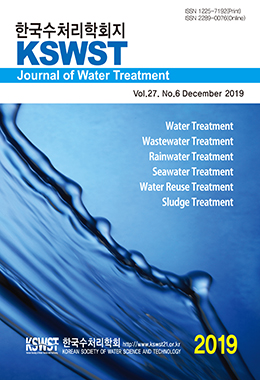KCI 등재
산기식 막분리 생물막 (MABR) 공정을 이용한 저에너지 고효율 질소제거 시스템 현황 및 향후 개발 전망
Current Status and Future Direction of Low Energy and High Efficiency Nitrogen Removal System using Membrane Aerated Biofilm Reactor (MABR) Process
한국수처리학회
2019.12


